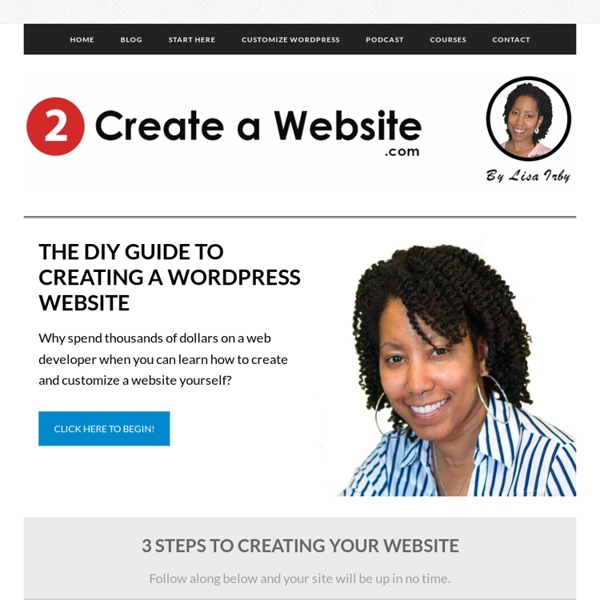



How To Make A Website - 5 Simple Steps - Free Tutorial Learn How To Make A Website — Free Tutorial Icebrrg - HTML Web forms, surveys, and invitations made chillingly simple HTML Tutorial Extended-Validation-Zertifikat Ein Extended-Validation-Zertifikat wird in allen gängigen Browsern (hier Mozilla Firefox) zum Beispiel in der Adressleiste vermerkt. Extended-Validation-SSL-Zertifikate (EV-SSL; deutsch etwa „Zertifikate mit erweiterter Überprüfung“) sind X.509 SSL-Zertifikate, deren Ausgabe an strengere Vergabekriterien gebunden ist. Dies bezieht sich vor allem auf eine detaillierte Überprüfung des Antragstellers durch die Zertifizierungsstelle. Die Vergabekriterien sind in den „Richtlinien für Extended-Validation-Zertifikate“[1] spezifiziert. Genutzt werden die Zertifikate meist, um Webanwendungen per HTTPS zu sichern und den Anwendern vor dem Hintergrund von Phishing-Angriffen eine zusätzliche Sicherheit zu geben, etwa beim Online-Banking. Motivation[Bearbeiten] Das vorrangige Ziel der EV-SSL-Zertifikate ist es, Phishing mit verschlüsselten und damit auf den ersten Blick sicheren Websites zu erschweren. Benutzerschnittstelle[Bearbeiten] Browserunterstützung[Bearbeiten] Vergabekriterien[Bearbeiten]
Blog or Static Website? Which one? Home >> Before You Build Back in the day, there was generally one kind of website. You put up web pages manually and linked them together in an organized fashion either using HTML and CSS or software. These are typically called static websites and it's what you're reading now. This method requires more technical experience and people often paid people to create their websites because it was tricky for the average non-techie. A blog is a special kind of website that is more flexible and much easier to setup. This is the kind of site most people create today. Blogs are dynamic, which means the content is called up by a script. So when you visit a traditional blog, you may have noticed that the newest content is listed near the top and the oldest at the bottom. If you choose WordPress, you can even use plugins to make the content display even more dynamically (i.e. display by most commented, etc.) WordPress for Static and Dynamic Content Blogs are Easier to Setup, But... There is No Right or Wrong
Posicionamiento Web en Buscadores. Webpositer. A DIY Web Design Education May 17 2010 A lot of designers and aspiring designers take formal design courses (or get design degrees), while many others wish they could take the time to get some formal design education. But not every designer has the time. After all, if you’ve come to design later in your career, or just have other responsibilities that preclude you from attending formal classes, going to school for a formal design degree just might not fit into your life. Image by laffy4k But that doesn’t mean you can’t learn just as much as those who have taken formal classes and be just as good a designer. It’s by no means a comprehensive list, but it’s a great place to get you started, and can give you a good foundation for your design education. Web Design 101: The Basics We all need to start somewhere, and the articles here provide a good foundation for the concepts discussed in later sections. Front-End and User Interface Design Fixed vs. Grids Front-End Coding User Experience Information Architecture Typography
Schaltfläche zur Webseitenidentität | Anleitung | Firefox-Hilfe Die Schaltfläche zur Webseitenidentität ist eine Sicherheitsfunktion von Firefox, die nähere Informationen über die gerade besuchte Seite zur Verfügung stellt. Mit der Schaltfläche zur Webseitenidentität können Sie herausfinden, ob die gerade angezeigte Website verschlüsselt ist, ob sie verifiziert ist, wer der Inhaber der Website ist und wer sie verifiziert hat. Dies sollte Ihnen dabei helfen, nicht auf betrügerische Websites hereinzufallen, die Ihren wichtige Informationen stehlen könnten. Die Schaltfläche zur Webseitenidentität befindet sich in der Adressleiste links neben der Adresse der Seite. Wenn Sie eine Seite betrachten, wird die Schaltfläche zur Webseitenidentität in einer von drei Farben dargestellt: grau, blau oder grün. Die Schaltfläche zur Webseitenidentität ist eine Sicherheitsfunktion von Firefox, welche nähere Informationen zu von Ihnen besuchten Seiten zur Verfügung stellt. Es steht allerdings nicht fest, wer die jeweilige Domain besitzt. Ein grauer Globus zeigt an:
How To Make A Website – Easy Step By Step With Screenshots Toonel.net